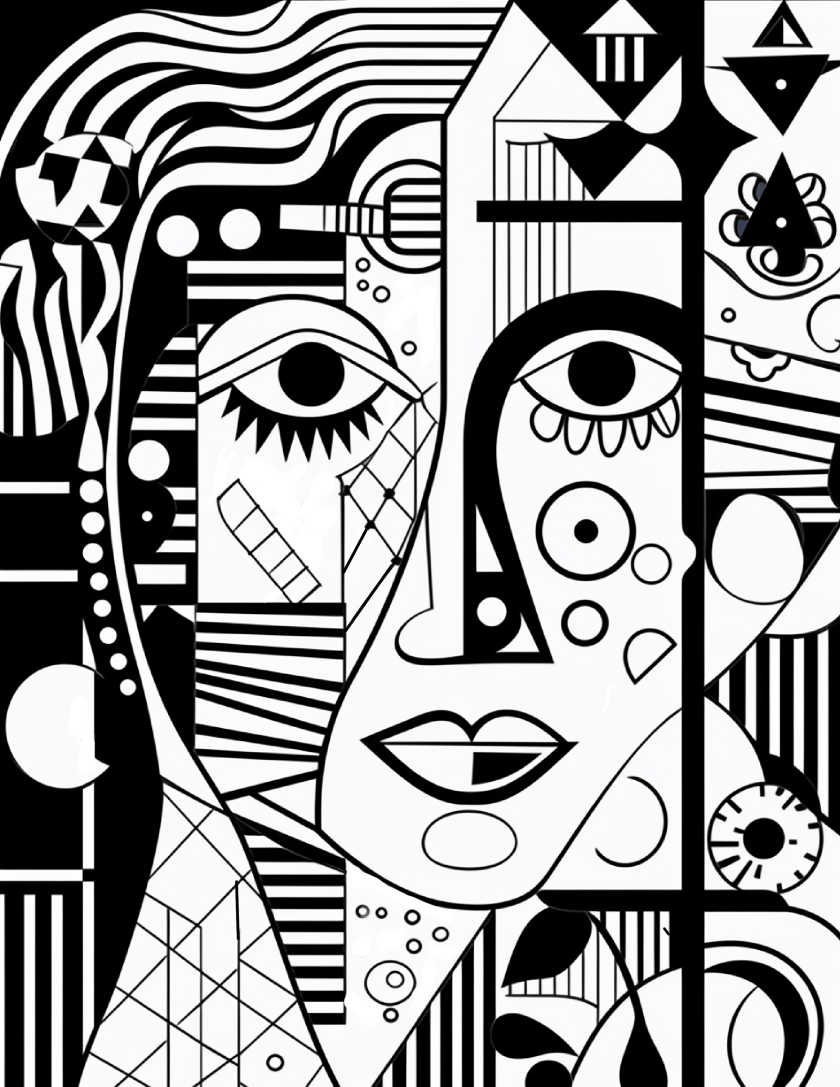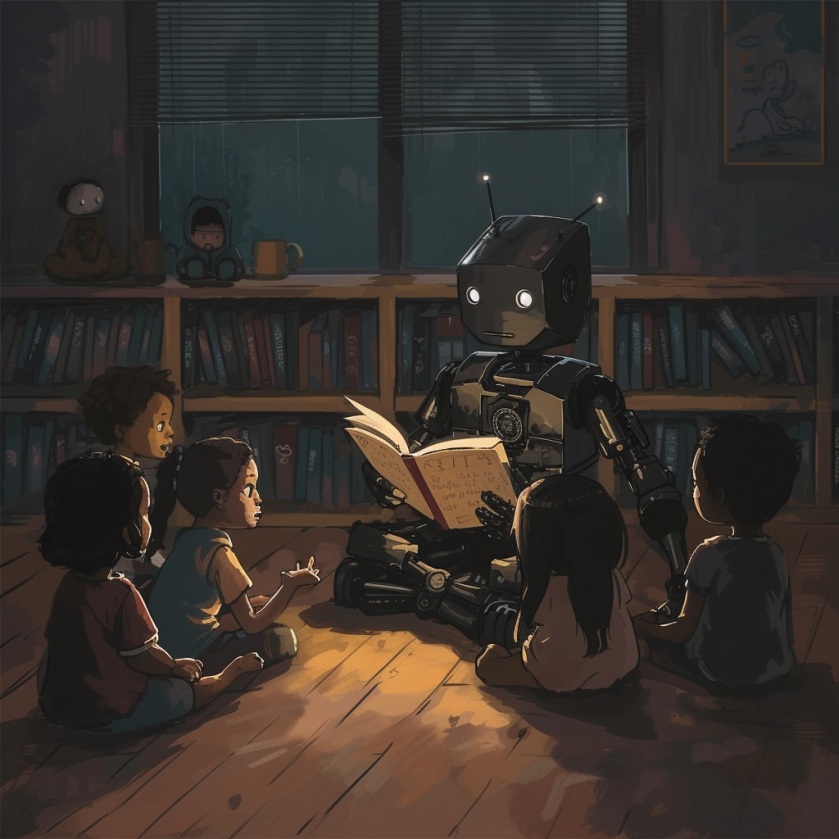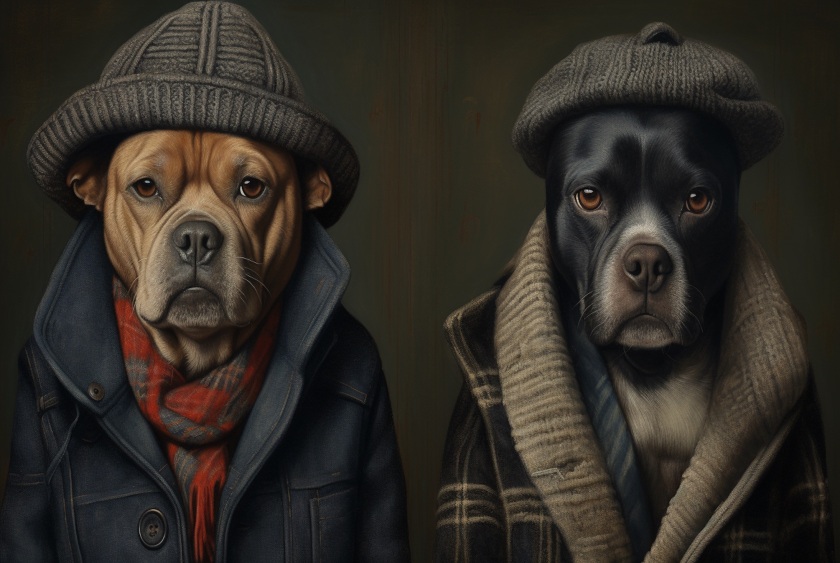Embark on an enthralling artistic adventure with our “Picasso Inspired Magic,” a curated collection of 18 delightful colouring pages specifically tailored for elementary pupils in the K-5 classroom. This series is designed not only to introduce the young artists to the vibrant world of colours but also to the intriguing realm of abstract art through the lens of the legendary Pablo Picasso.
Continue reading “Dive Into Abstract Art with Picasso Inspired Magic: A Colourful Journey for Young Minds”Igniting Imagination: Enhanced Writing Prompts for Elementary & Primary School Children
Creating a vibrant writing culture in the classroom opens up a world of imagination and insight for children in elementary and primary classrooms. With carefully crafted writing prompts, you can guide young writers through adventures, fantasies, real-life scenarios, and deeply personal reflections. Here’s a collection of diverse writing prompts and strategies for integrating them into your teaching.
Continue reading “Igniting Imagination: Enhanced Writing Prompts for Elementary & Primary School Children”Using AI To Help Us Tell Stories
The following video is a tongue twister being read by my good friend, David Horner. But not everything is as it seems!
The picture was AI generated with Midjourney. The tongue twister was AI written by ChatGPT.
The voice is AI created using ElevenLabs. It is David’s voice, which I cloned (with his permission) and then typed in the tongue twister and he read it out.
This is just a small sample of how we can use AI as storytellers. Hopefully, in future posts I can share with you more experiments.
Mike
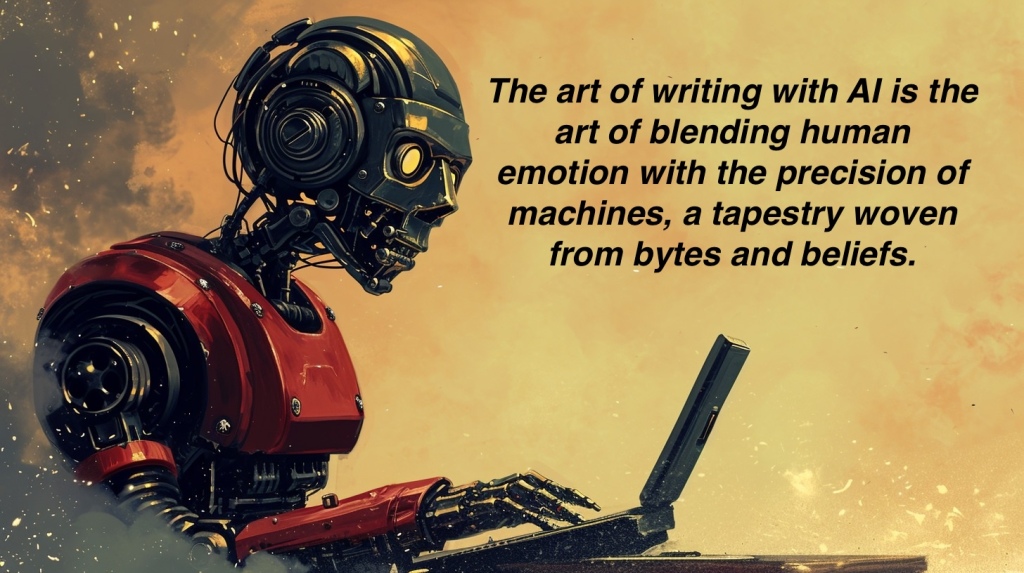
Twisting Tongues: A Collection of Challenging and Amusing Tongue Twisters
Greetings, word wizards and language enthusiasts! Today, I want to share with you a unique collection of tongue twisters, all generated by ChatGPT. These aren’t just ordinary twisters; they’ve been crafted by AI to offer both a fun challenge and a novel way to engage with language.
Continue reading “Twisting Tongues: A Collection of Challenging and Amusing Tongue Twisters”AI and Education – Quotes and Images
I recently did a talk to 25 primary school teachers about how they might think about using AI in their classrooms. In the past (pre AI) when I’ve done talks, putting the presentation together has taken hours as I searched for copyright free images and appropriate quotes.
These images were created in minutes with Midjourney and ChatGPT gave me a list of unique quotes within seconds. I then put the images and quotes into a looped video, playing as the staff came into the room.
Please feel free to copy any or all of these photos for your own use. Or, even better, use AI to create some of your own.


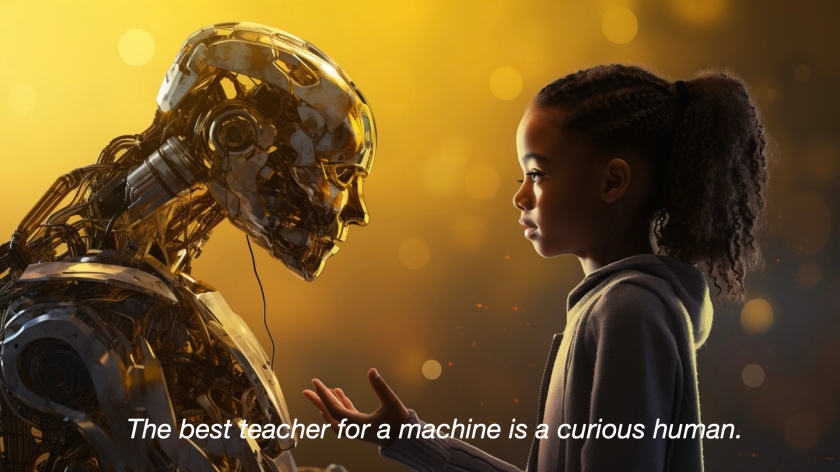
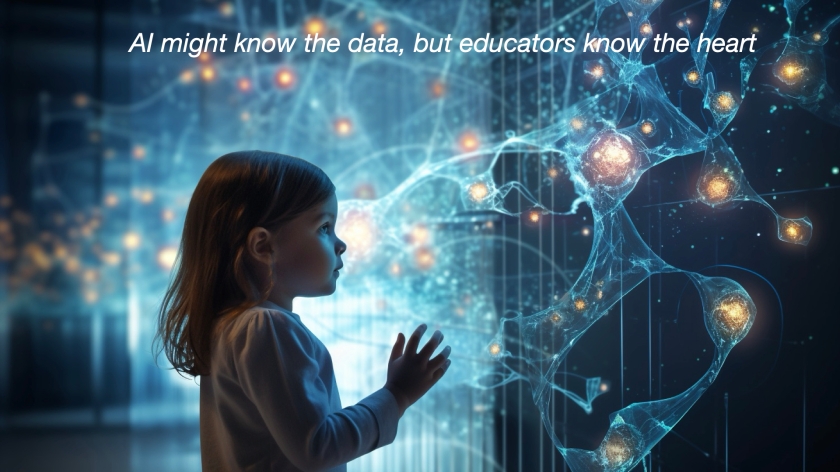


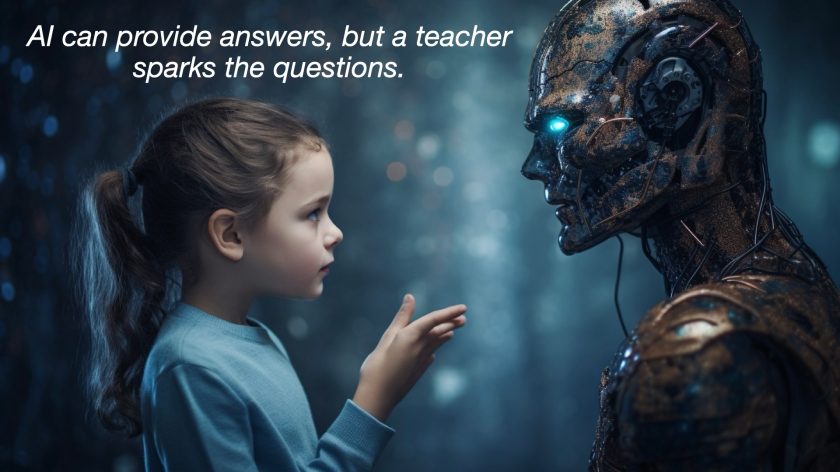

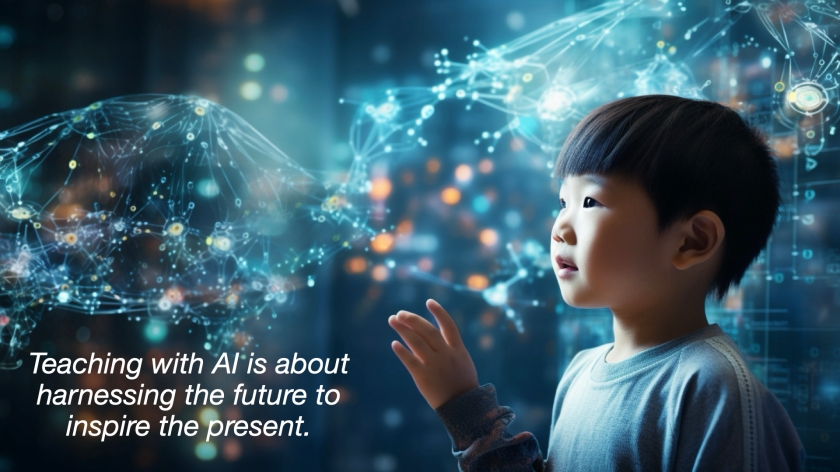
Writing Ideas For Teachers – A Quick Writing Lesson Using Adjectives & Nouns
Name That Band
Get the children to imagine they have heard a brand-new pop band. They sound great, they look great, their songs are great – they will be great! The only thing they don’t have is a great band name.

This is where The children come in: the band has asked if they can to come up with some possible names for them.
They need 13 names altogether to choose one from. This is the pattern they have given you:
The + adjective + noun
The adjective and noun must follow the sequence A-B, C-D, E-F, G-H, etc. as in the extract below, all the way to Y-Z.
The Aeronautical Bananas
The Curious Demons
The Electric Feathers
The band want a very unusual name for themselves, so the children need to do their very best to find the weirdest, most unlikely pairings of adjective and nouns they can. Encourage them to be different!
Have fun!
This idea is taken From David Horner’s book, ‘Cracking Creative Writing’. It contains 100+ activities to inspire children to write creatively and independently.

Have you read David’s latest poetry book? It is called ‘All Good Things – A Book of Utterly Brilliant Poems’. It also contains 10 QR codes which, when scanned, will take you to fun, animated readings of some of the poems.

Writing Ideas For Teachers – A Quick Writing Lesson Using Collective Nouns
Here is a quick writing idea to try out with your class all about collective nouns.
Explain to the children that a collective noun is the term we use for a group of things. For example, a flock of sheep, a bunch of flowers, a class of students.

Here are some rarer ones they might not know:
a tissue of lies,
a hand of bananas,
a murder of crows,
an ambush of tigers,
a blessing of unicorns,
a kingdom of rats
Search the Internet for lots more.
All of these collective nouns – and many, many more – were invented in the past. Now it is the children’s turn. You are going to get them to make up some new collective nouns.
How many can they invent? Get them to write down lots to start with – quickly. Then look back through them all and choose the best ones. Keep between eight and ten.
To get them started, here are six nouns:pirates, drink cans, snails ambulances computer games dentists
Invent a collective noun to describe a group of any of them.
Have fun!
This idea is taken From David Horner’s book, ‘Cracking Creative Writing’. It contains 100+ activities to inspire children to write creatively and independently.
Understanding Culturally Responsive Teaching
Introduction
In an increasingly diverse educational landscape, the need for culturally responsive teaching has never been more important. This approach is more than just an educational trend; it’s a vital shift in how educators understand and respond to the cultural backgrounds of their students. Culturally responsive teaching acknowledges, respects, and uses students’ cultures and experiences as a foundation for learning.
What is Culturally Responsive Teaching?
Culturally responsive teaching is an educational philosophy grounded in the idea that educators should be responsive to and inclusive of the diverse cultural backgrounds of their students. It involves understanding students’ cultural experiences and using this knowledge to tailor lesson plans that are both relevant and effective. This approach not only respects and values the diversity in the classroom but also empowers students by incorporating their cultural references into the entire learning process.

Why is it Important?
In a classroom where students come from a wide array of cultural backgrounds, a one-size-fits-all approach to education is not only ineffective but can also be alienating. Culturally responsive teaching bridges the gap between different cultures and the classroom. It:
- Builds a more inclusive school environment.
- Helps students from diverse backgrounds feel valued and understood.
- Improves student engagement and participation.
- Encourages students to bring their whole selves to their education.
- Prepares all students for a diverse and global society.
Strategies for Culturally Responsive Teaching
- Learn About Your Students: Take the time to understand the cultural backgrounds of your students. This might involve home visits, conversations with families, or community research.
- Incorporate Diverse Perspectives in Curriculum: Ensure that the curriculum reflects a variety of cultures and viewpoints. This could be through literature, historical events, or examples used in STEM subjects.
- Create an Inclusive Classroom Environment: Decorate the classroom with artifacts, posters, and visuals that reflect the cultural diversity of your students. This not only creates a welcoming environment but also a learning space that reflects the world’s diversity.
- Use Culturally Relevant Teaching Methods: Adapt your teaching methods to match the learning styles and cultural norms of your students. For example, some cultures value group learning more than individual tasks.
- Encourage Student Voice and Choice: Allow students to explore topics that interest them and relate to their cultural backgrounds. This fosters a sense of ownership and relevance in their learning.
- Reflect on Your Own Cultural Bias: Be aware of your own cultural biases and how they might affect your teaching. Continual self-reflection and professional development in this area are crucial.
- Engage with Parents and Community: Build strong relationships with parents and community members. They can be invaluable resources in understanding the cultural dynamics that influence students.
- Use Culturally Responsive Assessment Methods: Tailor your assessment methods to be culturally sensitive and fair to all students. This might mean offering different types of assessments that allow students to show their understanding in various ways.
The Impact of Culturally Responsive Teaching
Implementing culturally responsive teaching can transform the educational experience for students. It leads to higher engagement, better academic outcomes, and a more positive school experience. More importantly, it prepares students to thrive in a multicultural society, respecting and valuing differences while finding common ground.
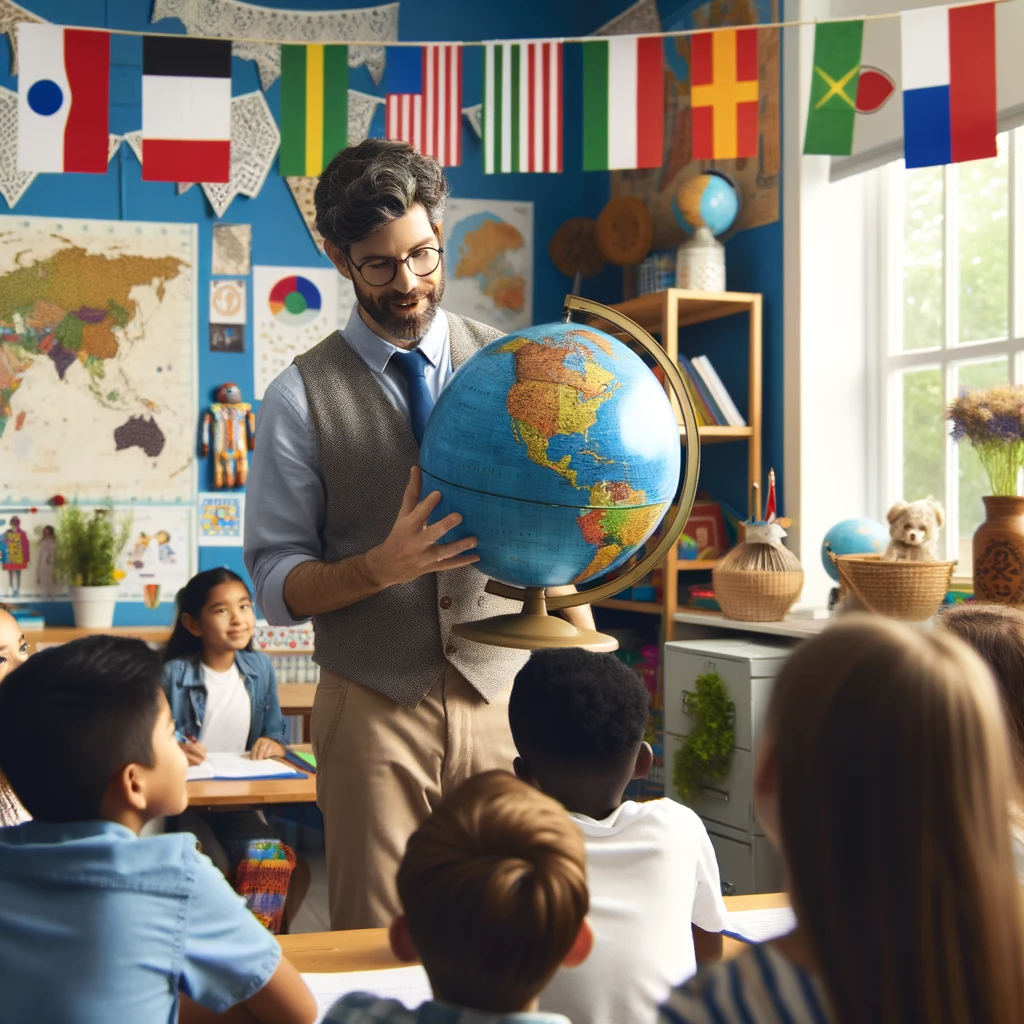
Conclusion
Culturally responsive teaching is not just about adding diversity to your lesson plans; it’s about reshaping how we view education in a multicultural world. It requires commitment, flexibility, and a willingness to learn and grow alongside your students. By embracing this approach, teachers can create a more equitable, dynamic, and effective learning environment for all students.
Artificial Intelligence
At the moment I am experimenting with all things AI. This post was written entirely by ChatGPT and the images came from DALL-E3 via ChatGPT. What are your views on this use of AI? Did it make the information contained in this post any less relevant?
I’d love to know what you think. Post your thoughts in the comments below.

Visual Vocabulary: Building Language Skills with AI-Generated Images
Language is a magnificent tapestry of words and meanings, woven intricately over time. For educators and learners alike, one of the most challenging tasks is not just memorizing vocabulary, but deeply understanding and recalling it. In this digital age, we have a groundbreaking ally in this endeavor: AI-generated images. These images, both abstract and realistic, can be the key to unlocking a deeper, more vivid grasp of vocabulary and language nuances.
The Synesthesia of Words and Images
It’s often said that a picture is worth a thousand words. When our brains encounter images, they’re not just passively observing; they’re actively interpreting, associating, and embedding that visual information into memory. Leveraging this cognitive process can greatly enhance language learning.

Harnessing AI-Generated Images for Language Learning
- Flashcards Reinvented: Traditional flashcards come with a term on one side and its definition or translation on the other. Why not incorporate AI-generated images? For abstract terms like ‘serenity’ or ‘chaos’, an AI could conjure up unique visuals that resonate with those meanings, creating a more visceral memory cue.

- Narrative Creation in Foreign Languages: Provide students with a series of AI-generated images and prompt them to construct a story using their target language. These often unpredictable and novel images can inspire creative storytelling, pushing students to explore new vocabulary and sentence structures.

- Cultural Context Discussions: Use AI-generated images to spark discussions around idioms, sayings, or culturally-specific terms. How might an AI interpret ‘the calm before the storm’ or ‘a bull in a china shop’? Such discussions can delve into the depths of language, context, and cultural interpretation.
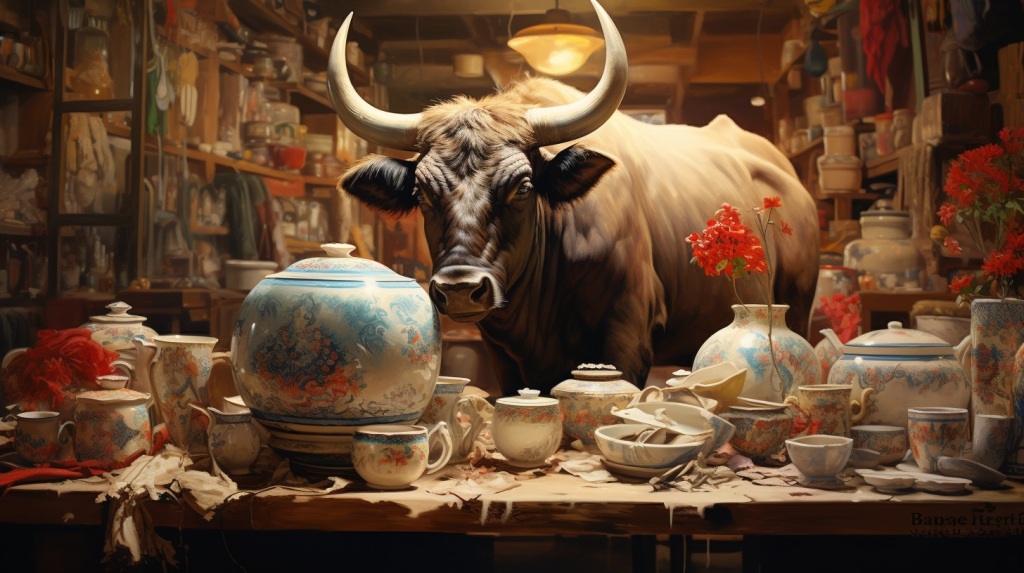
Why AI-Generated?
While the internet offers a plethora of images for every conceivable term, AI-generated images have a unique edge:
- Personalization: Many AI platforms allow for guiding image generation based on specific inputs, ensuring visuals that align closely with the desired term or context.
- Novelty: AI-generated images can be surprisingly novel, providing fresh interpretations that standard images might not offer. This novelty can prompt deeper discussions and engagement.
- Adaptability: As AI learns from its interactions, it can produce images more attuned to learners’ needs, evolving over time to better aid the educational process.
In Conclusion
As educators, our goal is not just to teach but to ensure that learning is deep, memorable, and engaging. In the vibrant intersection of language and AI-generated imagery, we find a tool that can bring words to life in vivid color and form. The next time you’re seeking to invigorate your language lessons, let AI-generated images paint the canvas of imagination for your students.

Visual Storytelling with AI: Creating Engaging Presentations
In an age where digital communication reigns supreme, the ability to present ideas compellingly and effectively is paramount. Be it in the boardrooms of the future or your classroom, visual aids in presentations can accentuate, clarify, and beautify the conveyed message. But what if we could elevate this experience further with the touch of AI magic? AI-generated images offer a fresh approach to visual storytelling that can be transformative for student presentations.
The Power of Visuals in Storytelling
Humans are inherently visual creatures. Studies suggest that we remember 20% of what we read but up to 80% of what we see and do. Images, graphics, and visuals are not just adornments to text; they are critical tools that can clarify complex ideas, create emotional connections, and enhance memory retention.
How to Use AI-Generated Images in Presentations
- Supporting Your Message: Start by identifying the key points of your presentation. Once outlined, search for or generate AI images that resonate with those points. For instance, if you’re discussing climate change, an AI could produce an evocative image of a city submerged or a forest withstanding devastation. These visuals immediately evoke emotions and emphasize the gravity of your message.

- Enhancing Aesthetics: Gone are the days of default clipart and overused stock photos. AI-generated images can provide fresh, unique visuals that make your presentation stand out. Whether you need a surreal background or an abstract design to make a slide pop, AI can be your artistic assistant.

- Balancing Visuals and Verbal Content: It’s essential to strike a balance. Too many images can distract, while too few might make your presentation bland. Use AI-generated images to emphasize, not overshadow. The image should complement your words, creating a harmonious blend that drives the point home.

The Edge of AI-Generated Visuals
While there are millions of images available online, AI-generated images have a distinct advantage:
- Uniqueness: AI-generated visuals are often one-of-a-kind. They provide a fresh perspective, ensuring your presentation won’t look like everyone else’s.
- Customization: Many AI tools allow users to guide the image generation process, ensuring you get visuals closely aligned with your topic.
- Diverse Interpretations: AI visuals can be ambiguous, allowing for multiple interpretations. This can be an advantage, as it encourages the audience to think and engage more deeply with the content.
In Conclusion
Embracing AI-generated images in presentations isn’t just about being tech-savvy; it’s about enhancing the quality and impact of your communication. As educators, guiding students to harness the power of AI in their visual storytelling endeavors equips them with a modern tool that’s bound to be a mainstay in future communication. The next time your students are gearing up for a presentation, introduce them to the world of AI imagery. The results might just be spellbinding.

Unlocking Creativity: AI-Generated Images as Writing Prompts
The blank page: a canvas full of possibilities, yet often a daunting obstacle for many budding writers. The age-old question of “Where do I begin?” has hindered many from embarking on their writing journeys. But what if there was a tool, a modern muse, that could spark imagination and weave tales from pixels? Enter the world of AI-generated images.
In the examples below I have used Midjourney, though the number of alternatives is growing weekly.
A Modern Muse from Machine Learning
For those unfamiliar, AI-generated images are the result of advanced algorithms crafting visuals that can range from the surreal landscapes of another world to realistic scenes of everyday life. The beauty of these images lies in their uniqueness and unpredictability. And for educators and students, they present an untapped well of inspiration.

Using AI-Generated Images as Writing Prompts
- Weekly Writing Challenges: Begin the week with an AI-generated image, projecting it for the class or distributing printouts. Ask your students to study it and let their imaginations run wild. Whether they see an alien marketplace, a forgotten castle, or a simple serene meadow, each interpretation can lead to a myriad of stories. Set a word limit to make the challenge feasible and focused.
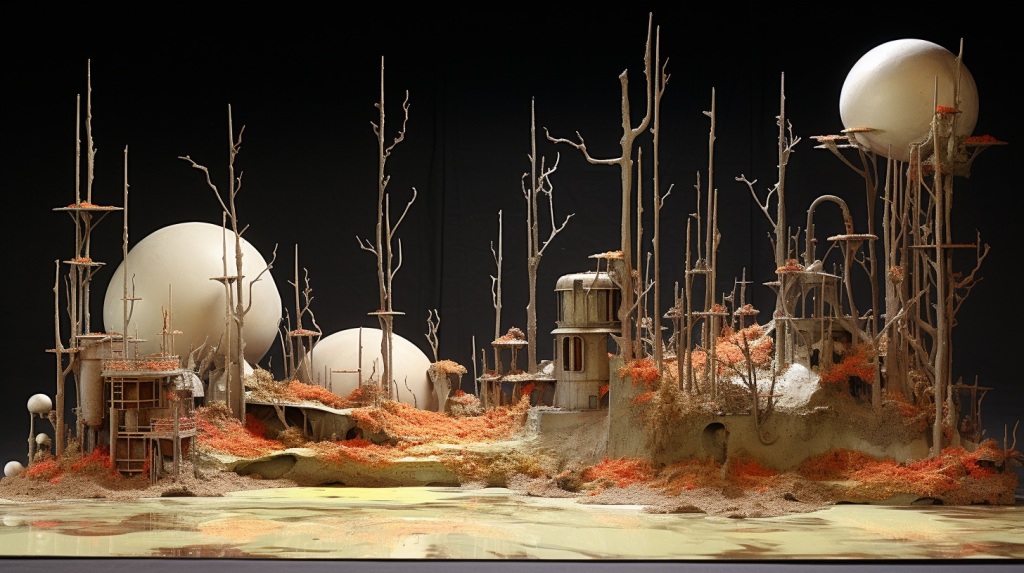
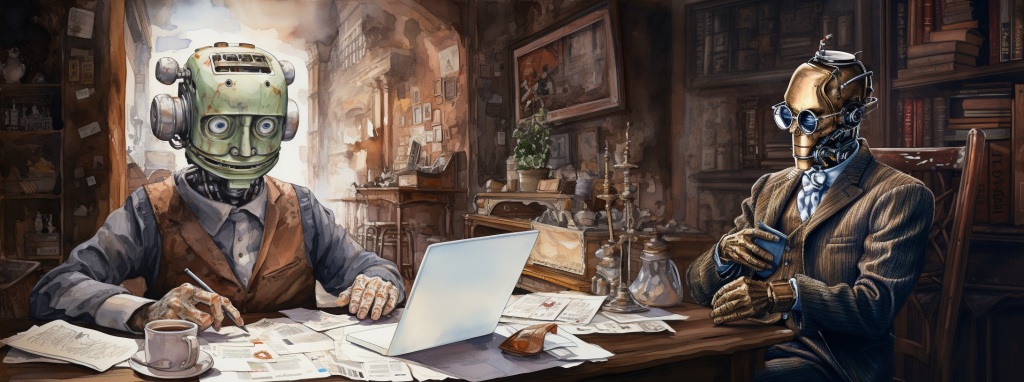

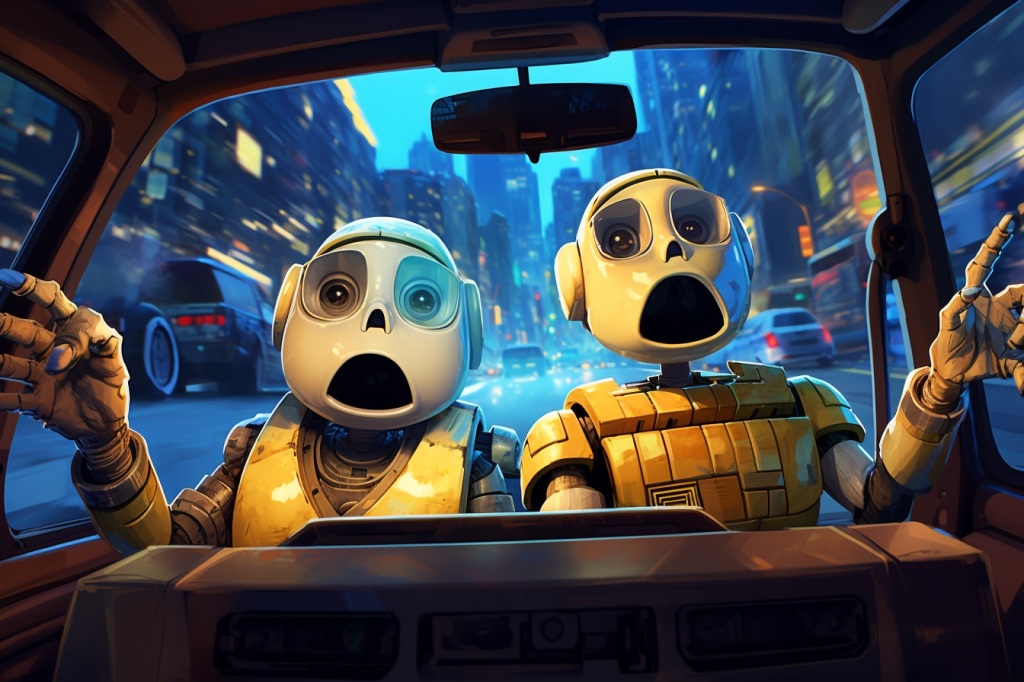
- Interpretative Discussions: After the writing activity, facilitate a class discussion. How did each student interpret the image? What emotions did it evoke? Was there a central character or an underlying theme? This is not only a wonderful exercise for understanding perspective but also for appreciating the diversity of thought.
- Peer-generated Prompts: Take the activity a step further by allowing students to dabble in generating their own AI-inspired images. There are various platforms and tools that simplify this process for beginners. Students can then exchange these images and write, turning the tables and allowing them to understand the creation process of their prompts.
Why AI-Generated Images?
Traditional writing prompts have their place, and they are tried and tested. However, AI-generated images introduce an element of novelty and surprise. The absence of a human creator means there’s no pre-existing storyline or intent behind the image, making it a raw, unbiased prompt.
Additionally, the often abstract nature of these images compels students to think outside the box, pushing their creative boundaries. They might create stories they never thought possible or explore genres they hadn’t previously considered.
In Conclusion
Embracing technology in the classroom doesn’t mean letting go of traditional methods but augmenting them with new tools. AI-generated images can be that bridge between the age-old love for storytelling and the modern advancements of machine learning. In this dance of pixels and words, we’re not just teaching students to write; we’re teaching them to dream, interpret, and innovate. So, the next time you see a blank page or a hesitant writer, remember there’s an AI out there ready to inspire.

Unleash Your Creativity with Dog-Themed Junk Journalling
Junk journalling is a fun and creative way to recycle old materials into a unique journal or scrapbook. If you enjoy arts and crafts, customizing, and giving new life to discarded items, junk journalling may be the perfect hobby for you.
What is Junk Journalling?
A junk journal is a handmade book created from a variety of repurposed materials, rather than traditionally bound paper. The “junk” comes from using things that would otherwise be thrown out.
For dog lovers, a great junk journal theme is dogs in hats, scarves and outfits! Dig out old magazines, books, photos and scraps featuring cute canines in fun accessories. Get creative collaging and decorating pages with these doggie images and mementos.
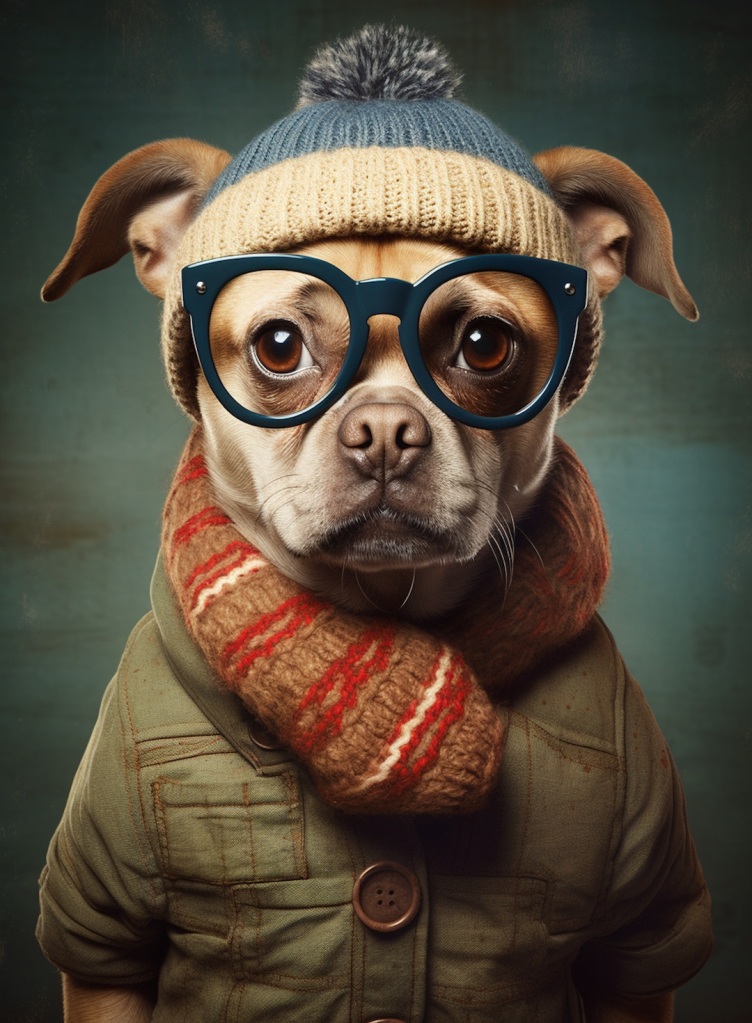
Dog-Themed Embellishments
There are so many ways to decorate your doggie junk journal pages:
- Cut out dog images from magazines and books like “Dogs in Hats, Scarves and More”
- Use scrapbook paper with dog prints and patterns
- Add photos of your own furry friends
- Embellish with dog-themed stickers, washi tape, stamps and fabric
- Jot down dog memories, training notes or veterinarian records
Let your imagination run wild crafting a pup-tastic junk journal!

Craft a Canine Junk Journal
Follow these steps to create your dog-inspired junk journal:
- Choose a base – An old book cover, binder or cardboard works well.
- Add pages – Use scrapbook paper, old magazine pages, sheet music or vintage dog book excerpts.
- Decorate – Collage cut-out dogs from books like “Dogs in Hats, Scarves and More.” Add doggy embellishments.
- Assemble – Secure pages with glue, staples, ribbon or binding rings.
- Fill it up – Journal dog memories, photos, training notes and more.

Get Creative!
Junk journals are all about imagination and giving discarded items new life. For dog lovers, a dog-themed junk journal is paws-itively delightful!
Cut out unique dog images from books like “Dogs in Hats, Scarves and More” and unleash your creativity. Craft a junk journal as unique as your furry best friend.

